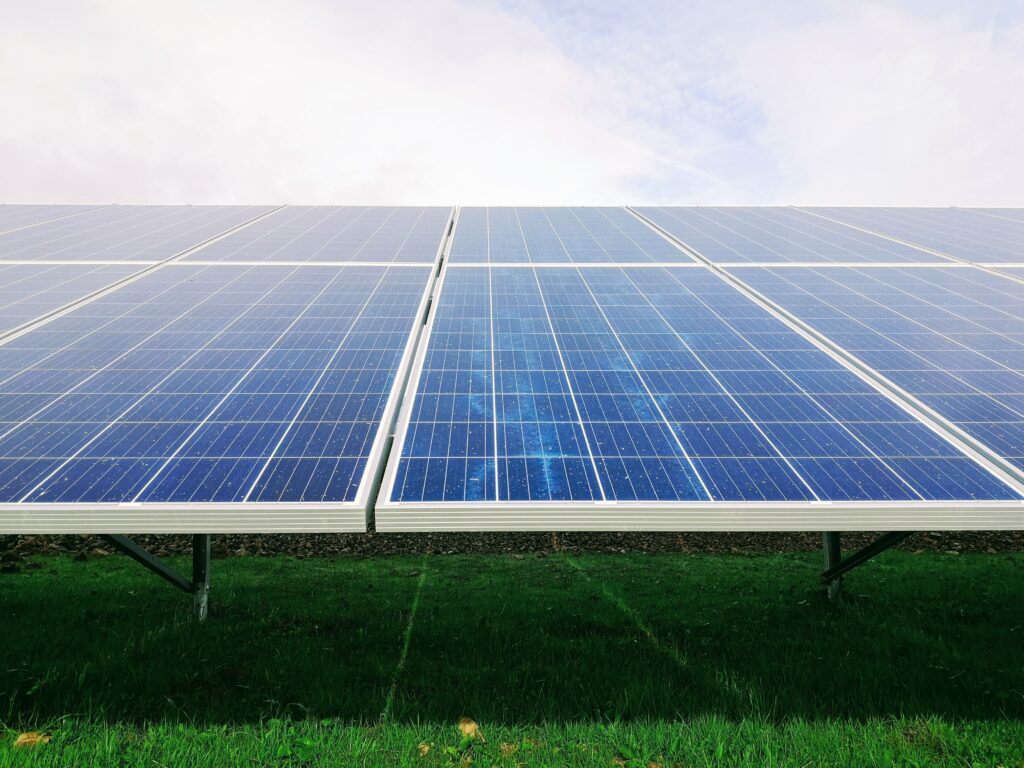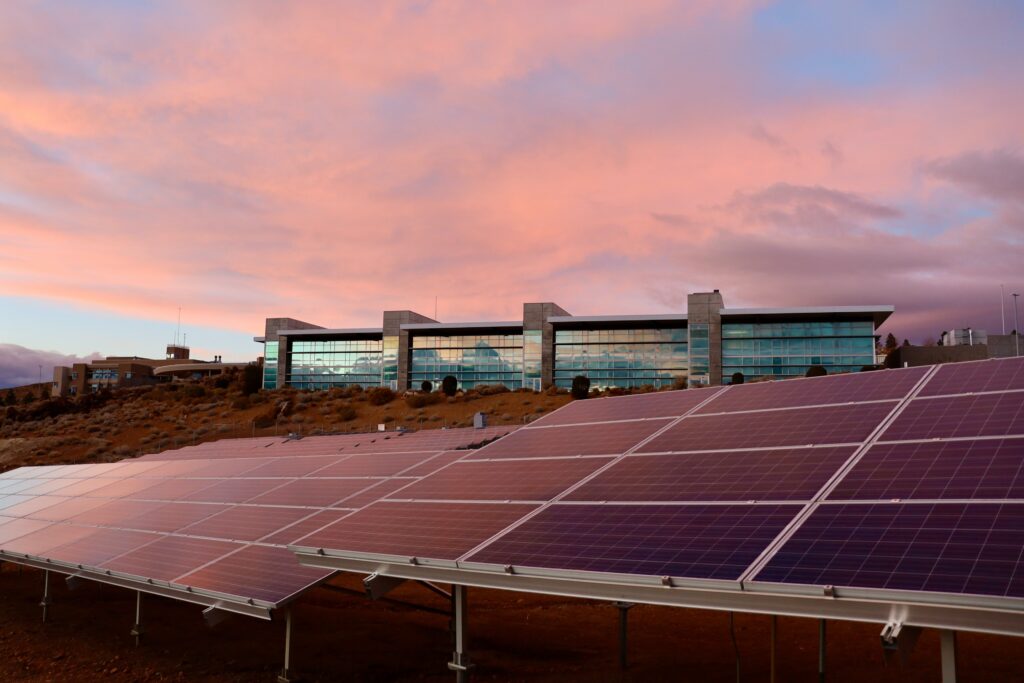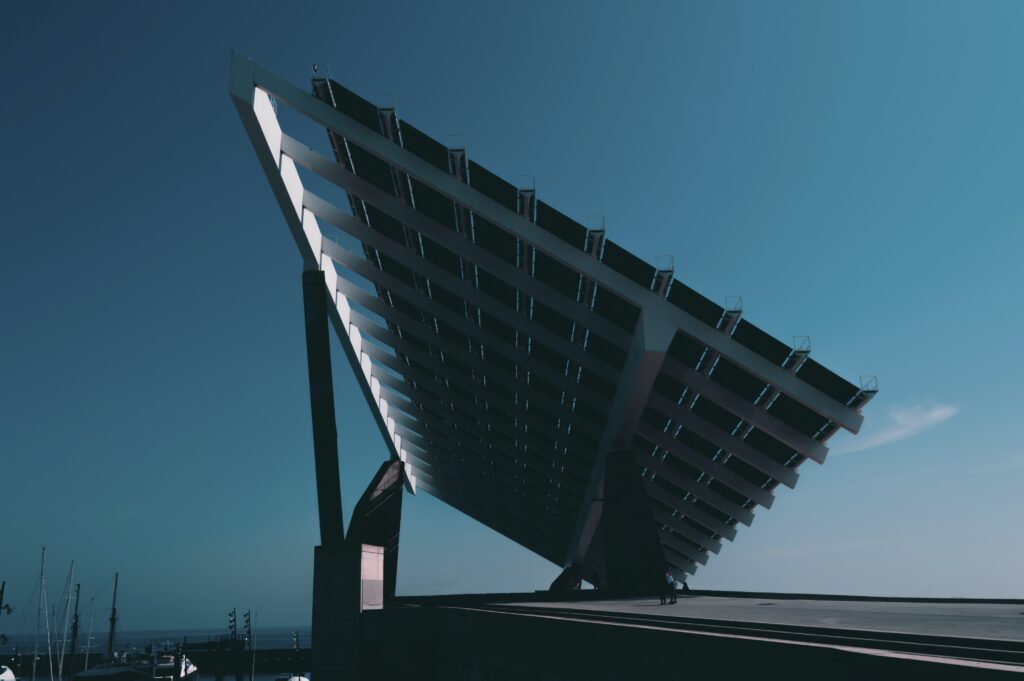Solar power is widely recognized as a clean and sustainable energy source, harnessing the power of the sun to generate electricity. However, like any form of power generation, it is not without its drawbacks. In this article, we will explore two negative consequences associated with solar power that are often overlooked. These consequences highlight the importance of striking a balance between the benefits of renewable energy and the potential challenges it poses. So let’s dive in and uncover these two lesser-known downsides to solar power.
Environmental Impact
Manufacturing of Solar Panels
The manufacturing process of solar panels involves the use of various materials, many of which have negative environmental consequences. For example, the production of solar panels requires the extraction of minerals such as silicon, silver, and cadmium. The extraction of these materials often results in habitat destruction and pollution.
Furthermore, the manufacturing process itself can be energy-intensive and contribute to greenhouse gas emissions. The production of solar panels typically involves the use of fossil fuels, such as coal or natural gas, which release carbon dioxide into the atmosphere. This can offset some of the environmental benefits of solar energy.
Waste Management and Disposal
Another environmental concern associated with solar power is the management and disposal of solar panels once they reach the end of their lifespan. Solar panels have a limited lifetime, typically around 25-30 years, after which they need to be replaced. The disposal of old solar panels can be challenging, as they contain hazardous materials such as lead, cadmium, and selenium.
Improper disposal of solar panels can result in the release of these toxic materials into the environment, posing a risk to human health and ecosystems. It is crucial to establish proper waste management practices and recycling programs to minimize the environmental impact of solar panel disposal.
Habitat Disruption due to Large Scale Solar Installations
Large-scale solar installations require vast amounts of land, which can lead to habitat disruption and loss of biodiversity. In order to accommodate solar farms, natural habitats may need to be cleared, resulting in the displacement of various plant and animal species.
The clearance of land for solar installations can fragment ecosystems and disrupt ecological processes. This can have long-term consequences for biodiversity conservation and the overall health of ecosystems. Strategic planning and careful consideration of the environmental impacts are necessary when siting and designing large-scale solar installations to minimize their impact on habitats.
Resource Intensity
Dependency on Extracted Materials
Solar energy depends heavily on the availability of certain extracted materials, such as silicon and rare metals, which may be limited in supply. The extraction of these materials can have negative environmental consequences, including habitat destruction, water pollution, and soil degradation.
Additionally, the reliance on extracted materials can lead to price volatility and supply chain issues. Any disruption in the supply of these materials can significantly impact the production and deployment of solar panels, potentially hindering the expansion of solar energy capacity.
Energy Needed for Production
The production of solar panels requires a significant amount of energy, which often comes from conventional energy sources such as coal or natural gas. This means that the manufacturing process itself contributes to greenhouse gas emissions and the depletion of finite resources.
Efforts are being made to reduce the energy intensity of solar panel production through technological advancements and improved manufacturing processes. However, the overall energy intensity remains a concern, as it offsets some of the environmental benefits of solar power.

Inefficiency and Unreliability
Weather Dependence
One of the primary challenges with solar power is its dependence on weather conditions. solar panels require sunlight to generate electricity, and their efficiency is significantly affected by factors such as cloud cover, shading, and geographical location. This means that solar energy production can vary greatly throughout the day and across different seasons.
The unpredictability of weather patterns can make it challenging to rely solely on solar energy for electricity generation. backup power sources or energy storage systems are necessary to ensure a consistent and reliable supply of electricity, which can add to the complexity and cost of solar power systems.
Seasonal Variance in Energy Production
In addition to weather dependence, solar energy production is also subject to seasonal variations. In regions with distinct seasons, solar energy generation tends to be higher during the summer months and lower during the winter months.
This seasonality can pose challenges for balancing energy supply and demand, particularly in regions heavily reliant on solar power. Energy storage technologies and grid integration strategies need to be implemented to address the seasonal variance in energy production and ensure a stable electricity supply throughout the year.
High Upfront Costs
Costs of Installation
While solar energy can provide long-term cost savings in terms of electricity bills, the initial installation costs can be high. The cost of solar panels, inverters, mounting systems, and other necessary equipment can add up, making it a significant investment for homeowners, businesses, and governments.
Although the cost of solar panels has decreased significantly over the years, the upfront investment required can still be a barrier for many individuals and organizations. Financial incentives, subsidies, and favorable financing options are often necessary to make solar power more affordable and accessible.
Required Infrastructure
Alongside the cost of solar panels themselves, the installation of solar power systems usually requires additional infrastructure. This includes wiring, batteries or energy storage systems, and inverters, which convert the captured solar energy into usable electricity.
The installation of this infrastructure may require additional space and resources, as well as skilled labor and technical expertise. The upfront costs associated with the necessary infrastructure can further increase the initial investment required for solar power systems.

Space Requirements
Limitations in Urban Spaces
One challenge with solar power is the limited availability of suitable space in densely populated urban areas. Rooftop solar installations are a popular option in urban environments, but space constraints can limit the potential for solar energy generation.
The orientation and shading of buildings, as well as other infrastructure elements, can affect the efficiency and productivity of rooftop solar panels. Additionally, the lack of available rooftop space or ownership restrictions may hinder the widespread adoption of solar power in urban areas.
Large Land Usage for Solar Farms
For large-scale solar installations, significant amounts of land are required to accommodate the solar panels and associated infrastructure. This can pose challenges, particularly in regions where land is scarce or protected, such as agricultural areas or natural habitats.
The conversion of large areas of land for solar farms can have environmental and social consequences. It may require the displacement of local communities, destruction of valuable ecosystems, and alteration of landscape aesthetics. Siting solar farms in areas with minimal ecological impact and community acceptance is crucial to mitigate these concerns.
Issues with Energy Storage
Costs and Feasibility of Batteries
Energy storage is essential to overcome the intermittent nature of solar energy and ensure a continuous power supply. Batteries are commonly used for energy storage, but they can be expensive and require ongoing maintenance.
The cost of batteries for energy storage can be a significant investment, particularly for large-scale applications. Additionally, the lifespan of batteries may be shorter than that of solar panels, resulting in additional replacement and disposal costs. Research and development efforts are ongoing to reduce the cost and improve the efficiency of energy storage technologies.
Energy Loss during Conversion
The process of converting solar energy into electricity involves some energy loss. Solar panels capture sunlight and convert it into direct current (DC), which then needs to be converted into alternating current (AC) for use in most electrical systems. This conversion process incurs energy losses due to inefficiencies in the conversion equipment.
Minimizing energy loss during conversion is crucial to maximize the overall efficiency of solar power systems. Advanced power electronics and more efficient conversion technologies are being developed to improve the conversion efficiency and reduce energy waste.

Limited Lifetime
Degradation over Time
Solar panels have a limited lifespan and typically degrade over time due to exposure to harsh weather conditions and ultraviolet radiation. As solar panels age, their efficiency decreases, resulting in a decline in electricity generation.
The degradation of solar panels poses two main challenges:
-
Reduced electricity generation: As solar panels degrade, their ability to capture and convert sunlight into electricity diminishes. This can result in a decrease in the overall energy output of solar power systems over time.
-
Replacement and disposal: Once solar panels reach the end of their lifespan, they need to be replaced. The replacement process incurs additional costs and can contribute to waste management challenges if proper disposal and recycling practices are not implemented.
Efforts are being made to improve the durability and longevity of solar panels through technological advancements and better manufacturing processes. However, addressing the limited lifetime of solar panels remains an important consideration for the sustainability of solar power.
Costs and Environmental Impact of Panel Disposal
As mentioned earlier, the disposal of solar panels can be challenging due to the presence of hazardous materials. The improper disposal of solar panels can result in environmental contamination and harm to human health.
Proper waste management practices and recycling programs are crucial to minimize the environmental impact of solar panel disposal. However, these practices can add additional costs to the lifecycle of solar power systems. It is important to consider the costs and environmental implications of panel disposal when evaluating the overall sustainability of solar energy.
Potential Health Hazards
Chemicals used in Solar Panels
The production of solar panels involves the use of various chemicals, some of which can be hazardous to human health. For instance, certain manufacturing processes with cadmium telluride (CdTe) thin-film solar panels can release toxic cadmium compounds.
Exposure to these chemicals during the manufacturing, installation, or disposal stages can pose health risks to workers and surrounding communities if proper safety measures and precautions are not in place. Ensuring the implementation of appropriate safety practices is essential to protect human health throughout the lifecycle of solar power systems.
Potential Safety Issues in Installation and Maintenance
Solar panel installation and maintenance require working at heights and dealing with electrical components, which can pose safety hazards if not done properly. Falls from heights, electrocution, and other accidents can occur if individuals are not adequately trained or do not follow safety protocols.
Proper training, adherence to safety guidelines, and the use of personal protective equipment are crucial to minimize the risk of accidents and injuries during solar panel installation and maintenance activities. Safeguarding the well-being of workers and technicians involved in the solar power industry is paramount.
Challenges in Grid Integration
Inconsistent Energy Supply
One of the challenges with solar power integration into existing power grids is the intermittent nature of solar energy. As mentioned earlier, solar energy production is weather-dependent, which can translate into varying levels of energy supply throughout the day and across seasons.
Integrating intermittent energy sources like solar power into the grid requires careful planning and coordination. Backup power sources, energy storage systems, and smart grid technologies are necessary to balance energy supply and demand and ensure a reliable electricity supply.
Updating Existing Power Grid
Integrating solar power into existing power grids often requires upgrades and modifications to accommodate the increased electricity generation and adapt to changing energy flows. This can involve substantial investments in grid infrastructure, including transmission lines, transformers, and control systems.
Updating the power grid to support a higher share of solar power can be a complex and time-consuming process, involving coordination between various stakeholders, including utilities, regulators, and grid operators. Planning and investing in grid modernization and flexibility are crucial to successfully integrate solar power into the existing energy infrastructure.
Economic Factors
Impact on Electricity Prices
While solar energy can provide long-term cost savings for consumers, the upfront costs and subsidies associated with solar power can affect electricity prices in the short term. Governments often provide financial incentives and subsidies to promote the adoption of solar energy, which can impact the overall cost of electricity for all consumers.
The financing models and policies implemented to support solar energy deployment need to strike a balance between incentivizing renewable energy adoption and ensuring affordable and stable electricity prices for all. This requires careful consideration of the economic implications and distributional impacts of solar power subsidies and tariffs.
Risk of Job Dislocations in Fossil Fuel Industries
The transition to solar power and other renewable energy sources can potentially lead to job dislocations in fossil fuel industries, such as coal mining and oil extraction. As the demand for fossil fuels decreases, workers in these industries may face unemployment or have to transition to new careers.
Addressing the social and economic impacts of the energy transition is crucial to ensure a just and equitable transition to a cleaner energy future. This includes providing support and resources for retraining and job placement in renewable energy sectors, as well as fostering economic diversification in regions heavily reliant on fossil fuel industries.
In conclusion, while solar power offers numerous benefits as a renewable energy source, it is important to consider and address the potential negative consequences associated with its production, resource intensity, inefficiency, cost, space requirements, energy storage, limited lifetime, health hazards, grid integration challenges, and economic factors. By understanding and addressing these challenges, we can work towards maximizing the positive environmental and social impacts of solar power while minimizing any potential drawbacks. It is essential to strike a balance between the deployment of solar energy and the protection of the environment, human health, and socio-economic considerations.




